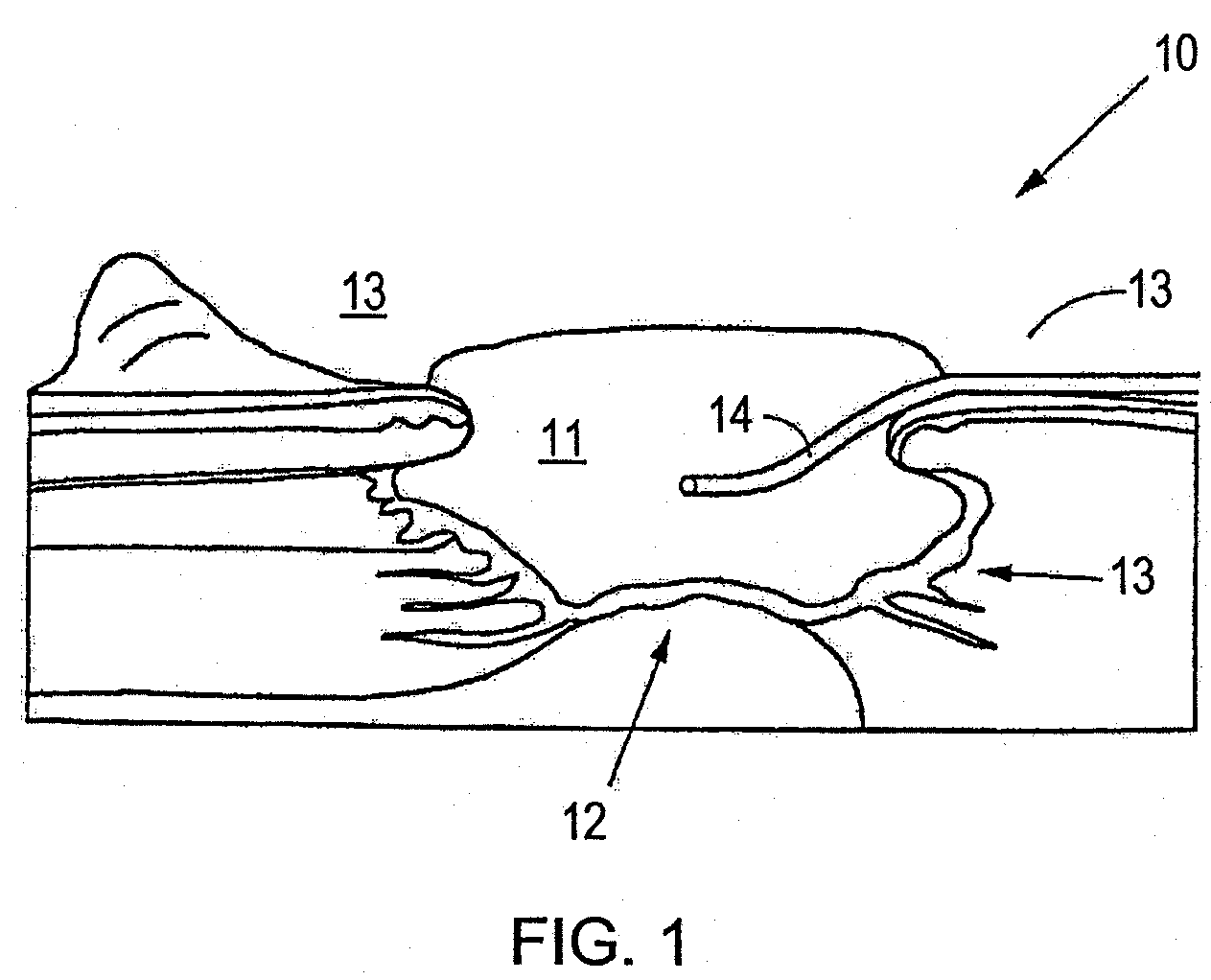System and method for use of agent in combination with subatmospheric pressure tissue treatment
a subatmospheric pressure and tissue treatment technology, applied in the direction of catheters, peptide/protein ingredients, bandages, etc., can solve the problems of reducing oxygen and nutrients, affecting the healing process, and affecting the ability to figh
- Summary
- Abstract
- Description
- Claims
- Application Information
AI Technical Summary
Benefits of technology
Problems solved by technology
Method used
Image
Examples
Embodiment Construction
[0046]Although those of ordinary skill in the art will readily recognize many alternative embodiments, especially in light of the illustrations provided herein, this detailed description is exemplary of the preferred embodiments of a subatmospheric pressure wound therapy system with provision for introduction of an agent, the scope of which is limited only by the claims appended hereto.
[0047]One embodiment provides a method for uniformly coating a wound dressing with polymers incorporating agents, such as Ag, utilizing a process and a wound dressing formed under the process. The method of uniform coating enables a user of the dressing to sever the predisposed dressing in any direction and still have all exposed surfaces uniformly coated with an antimicrobial agent sufficient to decontaminate the wound.
[0048]An alternative embodiment provides a method for uniformly coating a foam or dressing with a metal-based coating incorporating agents, such as Ag, and a dressing formed under the ...
PUM
| Property | Measurement | Unit |
|---|---|---|
| thickness | aaaaa | aaaaa |
| thickness | aaaaa | aaaaa |
| temperature | aaaaa | aaaaa |
Abstract
Description
Claims
Application Information
 Login to View More
Login to View More - R&D
- Intellectual Property
- Life Sciences
- Materials
- Tech Scout
- Unparalleled Data Quality
- Higher Quality Content
- 60% Fewer Hallucinations
Browse by: Latest US Patents, China's latest patents, Technical Efficacy Thesaurus, Application Domain, Technology Topic, Popular Technical Reports.
© 2025 PatSnap. All rights reserved.Legal|Privacy policy|Modern Slavery Act Transparency Statement|Sitemap|About US| Contact US: help@patsnap.com



